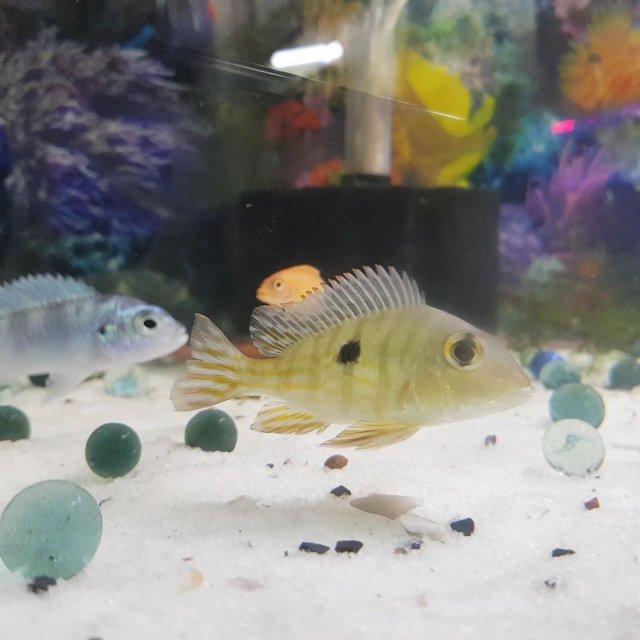Geophagus ID please
- Thread starter Gokul2787
- Start date
You are using an out of date browser. It may not display this or other websites correctly.
You should upgrade or use an alternative browser.
You should upgrade or use an alternative browser.
It looks like either a small Geophagus abalios or a red head. Hard to say at that size.
I agree with Ryan, below is a thread fin at about 2.5".

The problem with using common names, is that any Geophgine that gets trailer type fins can be called a thread fin.
Could be Acarichthys heckelli, adult below

Or just about any one from the altifrons group.

I've also seen LFSs call many Geophagines, "pearl cichlids".

The problem with using common names, is that any Geophgine that gets trailer type fins can be called a thread fin.
Could be Acarichthys heckelli, adult below

Or just about any one from the altifrons group.

I've also seen LFSs call many Geophagines, "pearl cichlids".

Here is a young red head Tapajos (maybe) I had.
IDing is quite complicated because some of the differences can be minuscule.
I use either the Cichlid Room Companion (cichlidae.com) or the book South American Eartheaters by Weidner as species guides, SAEartheaaters however, is about 20 years old, so many Geo's that were considered location variants at the time, have been officially described and are now legitimate species, and more have been added.
And telling gender when young is also difficult. Males sometimes have a different cranial profile, that I recognize only when I see a pair together.

Identification is a combination of:
- presence/absence of a preopercular mark and/or infraorbital stripe
- size/location of the midlateral spot
- coloration
- presence/absence and number of vertical bars and their configuration (some have bifurcated bars, G. dicrozoster has a Y bar, etc.)
- tail patterning
- country of origin (if known)
Some are easier to identify than others.
- presence/absence of a preopercular mark and/or infraorbital stripe
- size/location of the midlateral spot
- coloration
- presence/absence and number of vertical bars and their configuration (some have bifurcated bars, G. dicrozoster has a Y bar, etc.)
- tail patterning
- country of origin (if known)
Some are easier to identify than others.
Besides the more analytical cues mentioned above, there's a certain degree of I know one when I see one with some species, especially if you've had them before. That said, certain features, as mentioned above, point you in one direction or another.
Don't know its size, guessing 3" by comparing it with the other fish, in any case the one in the photo looks most likely female to me. And if you put a gun to my head, after a second look I'm thinking not red head Tapajos, at least not pure, based on the middle bar running through the side blotch as opposed to the double bar running on either side of the blotch common in red heads.
Don't know its size, guessing 3" by comparing it with the other fish, in any case the one in the photo looks most likely female to me. And if you put a gun to my head, after a second look I'm thinking not red head Tapajos, at least not pure, based on the middle bar running through the side blotch as opposed to the double bar running on either side of the blotch common in red heads.
Thanks guys for sharing the wisdom 
I'll keep this thread updated if I pick this individual.

I'll keep this thread updated if I pick this individual.






